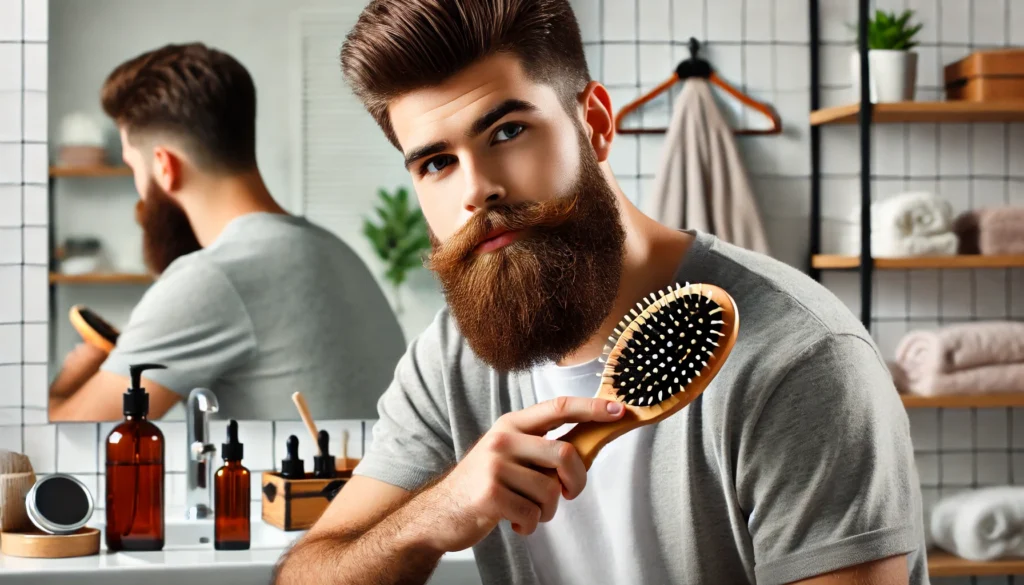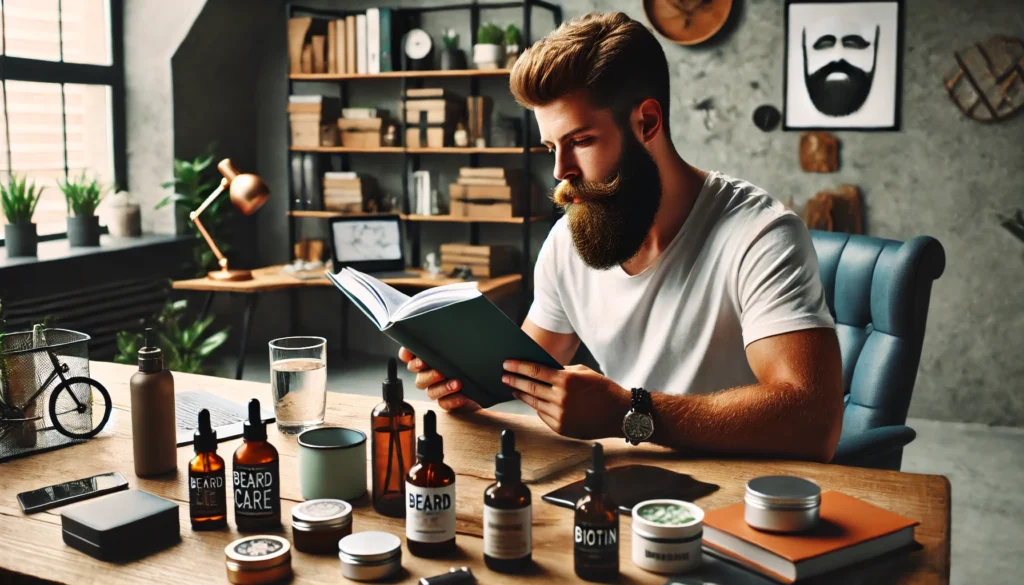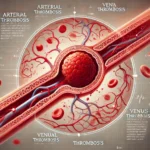Having a patchy beard, often referred to as “perh8ty beard,” is a common concern among men who dream of achieving a fuller, more even facial hair look. While genetics often play a key role, several factors contribute to uneven beard growth. This guide will equip you with the knowledge and tools to understand, manage, and improve your patchy beard.
The Science Behind Beard Growth
How Beards Grow: The Basics
Beard growth originates from hair follicles embedded in the skin. Each hair follicle has its unique growth cycle, consisting of three phases:
- Anagen Phase: The active growth period.
- Catagen Phase: A transitional phase where growth slows.
- Telogen Phase: The resting period before the hair falls out and the cycle restarts.
Patchy areas occur when hair follicles in certain regions are less active or dormant, resulting in sparse coverage.
Hormonal and Genetic Influences
Testosterone and dihydrotestosterone (DHT) are hormones that significantly influence facial hair growth. Genetics determine how your body processes these hormones and where hair grows, making patchy growth hereditary in many cases.
Common Causes of Patchy Beards
- Genetics: The primary reason behind uneven facial hair distribution.
- Hormonal Imbalances: Low levels of testosterone can lead to slow or sparse beard growth.
- Skin Conditions: Conditions like alopecia areata or fungal infections can disrupt hair growth.
- Poor Nutrition: Lack of essential vitamins like biotin, zinc, and Vitamin D negatively impacts hair follicles.
- Stress and Lifestyle Factors: Chronic stress, poor sleep, and unhealthy habits hinder optimal beard growth.
How to Assess Your Patchy Beard
To properly manage a patchy beard, it is essential to understand your unique growth pattern. Here’s how to assess your beard:
- Observe your beard over 4–6 weeks without trimming to identify growth patterns.
- Take weekly photos to monitor progress.
- Pay attention to areas with denser and sparse growth.
Use a grooming mirror and proper lighting to assess coverage and plan styling or treatment strategies accordingly.
Natural Ways to Improve Beard Growth
Nutrition for a Healthier Beard
A nutrient-rich diet can significantly boost beard growth. Include the following:
| Nutrient | Food Sources | Benefits |
| Biotin | Eggs, almonds, sweet potatoes | Promotes keratin production |
| Vitamin D | Fish, fortified cereals, sunlight | Supports follicle health |
| Omega-3 Fatty Acids | Salmon, walnuts, flaxseeds | Improves circulation to follicles |
Lifestyle Changes
- Exercise: Regular physical activity improves blood circulation and boosts testosterone levels.
- Sleep: Aim for 7–9 hours of quality sleep to enable your body to repair and grow hair.
- Stress Management: Incorporate meditation, yoga, or deep breathing to minimize stress-induced hair loss.
Effective Beard Grooming Techniques
Brushing and Combing
Use a boar bristle brush or wooden comb to:
- Distribute natural oils.
- Stimulate blood flow to hair follicles.
- Train hair to grow in the desired direction.
Applying Beard Oils and Balms
Beard oils containing ingredients like argan oil, jojoba oil, and Vitamin E can:
- Keep facial hair hydrated.
- Reduce itchiness and flakiness.
- Add a healthier shine.
Exfoliation
Regularly exfoliate your skin to remove dead skin cells and unclog hair follicles for better growth.
Styling Tips for a Patchy Beard
While working on improving growth, adopt styles that complement your natural beard pattern. Popular options include:
- Goatee: Focuses on the chin and mustache.
- Chin Strap: Follows the jawline for a sharp appearance.
- Stubble: A 5 o’clock shadow adds rugged appeal with minimal growth requirements.
- Van Dyke: A combination of mustache and pointed chin beard.
Advanced Treatments for Patchy Beards
Topical Solutions
Minoxidil is a popular over-the-counter treatment proven to stimulate hair growth when applied regularly to sparse areas. Consult a dermatologist before starting.
Hormone Therapy
In cases of low testosterone, hormone replacement therapy under medical supervision can enhance beard growth.
Beard Transplant Surgery
A surgical solution where hair is transplanted from the scalp to patchy beard areas. This is an option for those seeking permanent results.
Microneedling
A cosmetic procedure where tiny needles stimulate collagen production and improve hair follicle function.
Frequently Asked Questions (FAQs)
- Does shaving help a patchy beard grow thicker? No, shaving does not influence the thickness of your beard, as it does not affect hair follicles.
- How long does it take to see improvements in beard growth? Natural remedies typically show results after 3–6 months, while topical treatments may take longer.
- Can stress cause a patchy beard? Yes, chronic stress disrupts hormonal balance and reduces follicle activity, leading to hair loss.
- Are beard growth supplements effective? Supplements with biotin, zinc, and Vitamin D support hair growth but may not guarantee results for everyone.
- What products are recommended for maintaining a patchy beard? High-quality beard oils, balms, and gentle cleansers tailored to your beard type.
Conclusion
A patchy beard doesn’t have to be a permanent setback. Understanding its causes, using effective grooming techniques, and trying targeted treatments can lead to noticeable improvements. Whether you embrace your natural beard or work toward a fuller look, remember that confidence is the most important aspect of any style. Follow this guide to turn your patchy beard into a source of pride, and enjoy the journey toward achieving the perfect beard!
Recommended Articles
Smartbook HJC160 Review: Everything You Need to Know about the HJC173 Model and Its Camera
The Ultimate Guide to XD11 Yonex: Everything You Need to Know
Sliuce 1088 by Gold: The Ultimate Guide to Gold Prospecting Efficiency
A Comprehensive Guide to Furniture Transfers Rub On
The Ultimate Guide to Nattienut9



